What's In Your Office?

As the tech industry embraces more remote work, hardware solutions and home office setup become more important for content creation or productivity.
2020 has not been fun. At least, we've lived through half of it and there is hope on the horizon. Faced with a global pandemic that drove majority of tech workers to stay at home, the software industry has had to rediscover how to conduct business and innovate to keep the needle moving. There is a lot to juggle and circumstances are not easy, even for folks who have been working remotely for years. Yet, your home office is where it all happens now. The right technical equipment, setup and precious zen are keys to productivity.
A new channel lot of technical folks have turned to, is video streaming. What was meant to be a medium for gamers to live stream gameplay with commentary and interactivity, has quickly evolved into a wonderful platform for software developers to share content. The goal is to collaborate as developers write code in real time, and learn from each other. Over time, streamers are building developer communities online and a network of collective support.
While lucrative and with plenty of pioneers to draw inspirations from, live streaming developer content is not for the fainthearted. For one, developers have to drop their egos and come prepared with a mindset of embracing struggles/failures in real time. One has to accept the norms of live streaming—it is akin to watching an expert at work, moving past roadblocks and entertaining an audience along the way. Also, the other aspects of live streaming that catch developers by surprise, are hardware, software and streaming setup. While the barrier to entry is really low, you quickly discover bottlenecks. One really has to start thinking as a content creator—for an optimal experience, every pixel and every interaction matters. Like a good show producer, one needs to have a relentless desire to make things better for the audience.
Be it for a streaming setup or remote work productivity, your home office is now more important than ever. As folks who write professionally, we're used to second/third person dialogues and story telling in the form of articles. This will be different—a uniquely personal post on my home office setup. You get to see how I work and aim for productivity.
Live streaming or an elaborate home office is sometimes seen as a rich kids' sport, needing lots of expensive setup. It really does not have to be. Everyone has different home office situations and challenges. Every streamer is unique and has specific demands on what is required for a high quality production, given the content and setup. If you wait to acquire all the needed hardware or software, you'll likely wait forever in pursuit of the perfect setup. It may be prudent to start small and upgrade in baby steps as need be. Similar to Pain Driven Development, you find bottlenecks and overcome them over time. Each creator has their own way of 'making the sausage'—I'm sharing mine, hoping it churns ideas. What you'll see here is a long list of tech gadgets and accessories in my home office, built up very slowly over years—most a testament to past struggles.
So let's go. In the words of Samuel L. Jackson: What's in your wallet .. er, office?
| What: | Why: |
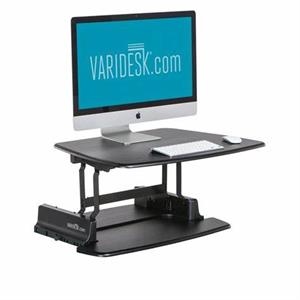 |
I have a fairly small glass-top stationary desk, which means I can scale up but not much wide. I use the Varidesk Pro 36 on top of my desk, acquired a few years back when standing desks were all the rage. Now, the bad thing about standing desks is - you have to stand a lot. The good thing is between the sections, there is plenty of space to stow away computers and hide cables. |
 |
I've had the Staples Hyken mesh chair for quite some time now and still recommend it. Adjustability is great and materials hold up well. After about 8 years though, I want to try something different, hopefully with better lumbar support, as one needs with age. Also, the mesh headrest sometimes looks a little odd against green screens or virtual backgrounds. |
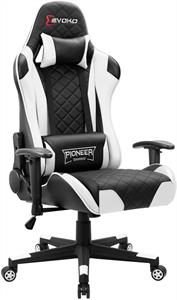 |
I'm taking the plunge into using a gaming chair, like all the cool kids. Prices and features vary vastly, but a lot of similar chairs are arguably made by same manufacturers with different branding. I found something that is fairly cheap, but with adjustability features and decent reviews - the Devoko Pioneer Gaming chair. The diamond-shaped cross pattern stitching adds to pressure resistance and reminds me of beloved Audi sports seats. |
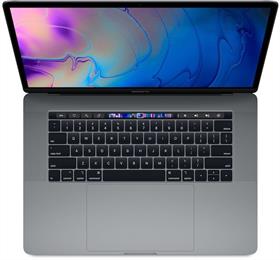 |
After being a Windows user for a decade, I switched to MacOS about 7 years back and have not looked back. I use a 2017 15" MacBook Pro as my primary dev machine, with specs of Intel Core i7 quad core CPU, AMD Radeon 560 GPU, 16GB RAM and 1 TB SSD. This computer is definitely aging with failing ports and a weak battery, but still handles every day development/productivity tasks graciously. MacBook Pro laptops are robust workhorses, but their thin elegance sometimes comes at the cost of thermal throttling. While my MacBook Pro handles most tasks well, streaming content demands lots of fast video encoding and audio mixing, along with running heavy applications—just a little too much to ask for from a single machine. As it is, the laptop fan runs almost all day, grudgingly carrying the load. |
 |
I use the ParcSlope laptop stand from Twelve South. This thing is versatile and has great build quality. I used to type directly on my MacBook Pro and the stand props the laptop up at a nice angle. With the ParcSlope stand sitting on my second tier Varidesk level, the top of the laptop is almost at my eye level white sitting/standing. |
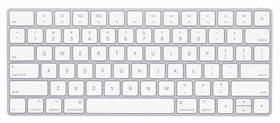 |
Unless I'm on the road, my primary keypad is the smaller Apple Magic Keyboard—connects to the MacBook Pro over Bluetooth and easy to charge over lightning port. The keys have just the right amount of travel and are also very forgiving. |
 |
My primary pointing device is the Apple Magic Trackpad—also connects to the Mac over Bluetooth and charges through lightning port. This trackpad is a beautiful piece of precise engineering. It provides a huge smooth glass surface for tracking, makes zero noise and supports all MacOS finger gestures. |
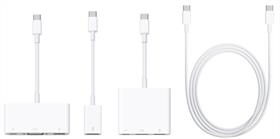 |
As expected in the Apple ecosystem, my desk and backpack is littered with a variety of dongles for connecting peripherals. I have tried a few USB-C docking stations in the past, but some things always lost fidelity when expecting Thunderbolt speeds or pushing 4K video. I have since reverted to using only original Apple dongles—they can be cumbersome, but I can depend on them for reliability. I use dongles to USB-C connectivity through adapters for charging, Ethernet, HDMI, USB conversion, SD cards and more. |
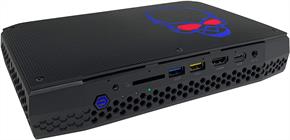 |
I had started streaming content from my dev machine, often running Skype calls, Visual Studio, mobile simulators, Unity and other applications. It became painfully evident that all this load was too much for a single computer to handle, especially if you cannot offload the outgoing video encoding to a GPU. For a second computer, I wanted something small that provides easy switcheability—enter the Intel NUC. These are barebones Windows PCs sold without any peripherals and a rare occasion where Intel & AMD work together to make something nice. Specs of my NUC are Intel Core i7 quad core 8809G CPU, AMD Radeon RX Vega GPU, 32 GB RAM and 256 GB SSD. This thing is loaded with ports and has huge heat sinks for thermal management. It remains tucked in behind keyboards and has one job only—a dedicated streaming machine. Performance is solid and the GPU lights up the Ultrawide gorgeously, in addition to helping with video encoding. This tiny NUC really carries production! |
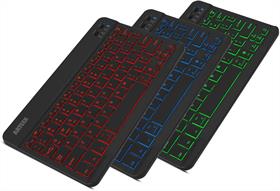 |
Yes, I do have two keyboards sitting right next to each other - one for Mac & one for PC. For Windows, I have the Arteck Universal keyboard, with rechargeable battery. This keyboard is razor thin, easy to type on, connects to the NUC over bluetooth and boasts 7 changeable backlit colors. What else can you expect from a keyboard? |
 |
For my Windows mouse, I use an old favorite—the Microsoft Arc Touch mouse, with rechargeable batteries. This thing is precise, has touch scrolling and folds flat when not in use. |
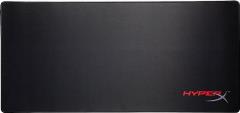 |
I use the HyperX Fury Pro gaming mousepad in XL form. The fabric is super smooth and the rubberized material underneath keeps it in place. Essentially, I have both my keyboards & pointing devices on this mousepad. It works. Also, it's a mousepad. |
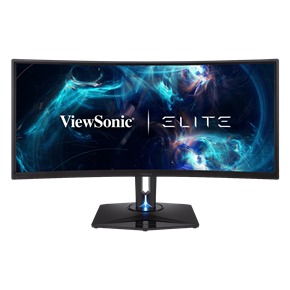 |
Let's talk about the external monitor—this is a big part of my puzzle, quite literally. I use the ViewSonic Elite XG350R-C Ultrawide curved gaming monitor, with 35" WQHD 12:9 aspect display sporting 3440x1440 resolution. This thing has 100Hz refresh rate, AMD Radeon FreeSync, RGB lighting in the back and renders beautiful rich dark colors. The two HDMI inputs are hooked up to the respective MacOS and Windows machines, with both being able to drive it at native resolution. I can switch inputs with the flick of a button, without having to wrestle wires. Just for kicks, the Ultrawide does support a Picture-in-Picture mode, so I could see half Windows and half Mac, and easily keep an eye on things while streaming. |
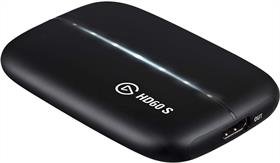 |
So the moment you decide to go with a dual computer streaming setup, you essentially have to capture the video feed from dev machine into the streaming machine. I use the popular Elgato HD60S to capture my MacOS output as input into Windows. While there are 4K video capture cards out there, I think most developer content is more than fine at 1080p. The Elgato capture device is sleek and quite a fantastic solution, when it works. I did have a fair share of struggles initially, the likes of green display bars and failure to detect/maintain feed. The key for me was to not skimp and go full 60 FPS (Frames Per Second) between computers, since they are hardwired anyways. I also recommend skipping any hardware switches/adapters in between—go HDMI out straight from dev machine and direct USB 3 into streaming machine, both sides at supported resolutions. |
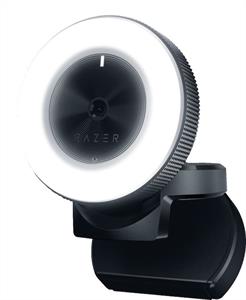 |
My 'coding' camera is the Razer Kiyo webcam. This is a beautiful piece of hardware with a small but effective ring light, camera control software and captures video feeds at 1080p @ 30FPS / 720p @ 60FPS. The Kiyo sits on top of my Ultrawide and looks down on me. I've never really had any issues—this thing just works. |
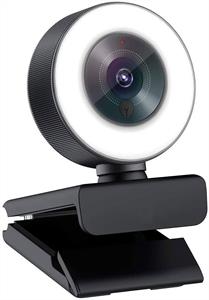 |
My 'face' camera is the Angetube 1080p HD webcam, also with an adjustable ring light. This is cheaper and likely borrows from the Kiyo design, but works decently well. This camera sits on top of the MacBook lid at exactly my eye level and only used during interview-type conversations or meetings. |
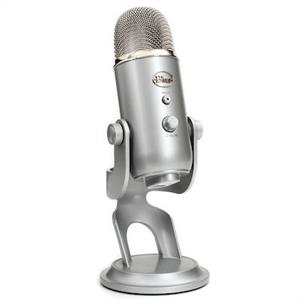 |
Bad sound quality can be the death of any video/broadcast. My microphone is the popular Yeti Blue, that essentially sits on the top level of my Varidesk a few inches from my face. The audio Gain on this can be a little too sensitive at times and it takes some finagling to get it to a balanced spot. The goal is to get crisp audio capture in, before handing things off to the software filters/range gatekeepers. While old, the Yeti sure holds its ground and manages to tune out our 4 year old toddler for the most part. |
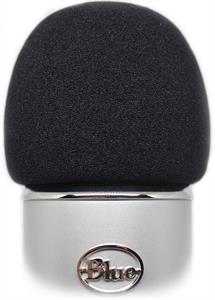 |
I do give the Yeti microphone a helping hand through a 'professional' Foam Windshield. This snaps on Yeti easily and cuts out more of the background noise, in particular, the harsh 'P' and 'T' sounds. It also protects the microphone from coffee/Coke Zero particles as I drink through my streams/meetings. |
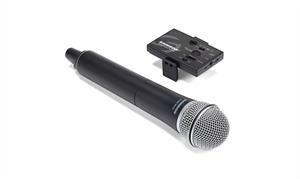 |
While on the road at tech events (in a past life without a global pandemic), I really enjoy interviewing folks who are passionate about something. My preferred microphone is the Samson Go Professional Handheld Wireless dual mic set that produces great audio. The set includes a dual-channel receiver that mounts directly to smartphones for video capture, while the wireless microphones have decent range. While I rarely use these microphones while at home, the whole setup comes with variety of wires for connectivity and I have been exploring options to capture external sounds as appropriate. |
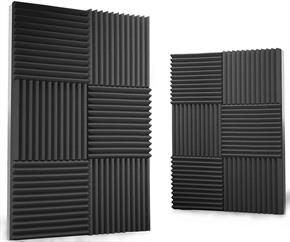 |
At my desk, I am directly facing a wall at three sides, which means all those sound waves come floating back at me. I've recently gotten the Siless 12 pack Acoustic Foam Panels for better sound absorption in my office. These foam wedges have decent density, but are super easy to install anywhere with dual-sided adhesive strips. And they do elevate office decor/zen if done in alternating patterns. |
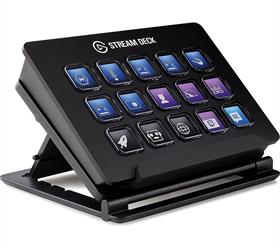 |
Strap on programmable LCD buttons in a shiny reliable piece of hardware, and you get nerd nirvana. Just like most other content creators, I do use the regular Elgato Streamdeck extensively. The companion software integrates seamlessly with most streaming applications/services, thus providing granular control over almost every dynamic aspect of scenes/sources/transitions. The real beauty of Streamdeck and the broad appeal, however, is because of system automation—macro actions that can be combined into a single step triggered with a tactile multi-action button press. Streamdeck supports folders for infinite depth of control and the LCD buttons can be customized with dual state custom graphics. Above all, I think Streamdeck allows content creators to show their character and add a personal touch, through the all-important emojis/GIFs and sound clips. There are times where I stream interviews from browser-based streaming software, and really miss the level of control that Streamdeck brings to the table. This piece of hardware is a clear winner. |
 |
Our workspaces at home can sometimes get messy, and this is where green screens help. You get to take out the background and waste no real estate in your streams. Sure there are virtual cameras using AI, but nothing quite beats the precision of having a physical green backdrop. My first foray was the Neewer chromakey green/blue 5'x7' background. This thing has reversible colors on muslin cloth and collapses flat for portability. However, I did not have a tripod/collapsible stand and the big screen most times ended up being precariously balanced behind me. |
 |
After months of struggles, I got a better green screen - a printed one from Vistaprint. This is the classic vinyl retractable pull-up banner, just like you what see at conferences. The vinyl green shows up a little differently, but nothing chroma key adjustments cannot match. So I end up having no or virtual backgrounds anytime my cameras are on. Life is good with some camera tweaks of angle and cropping. |
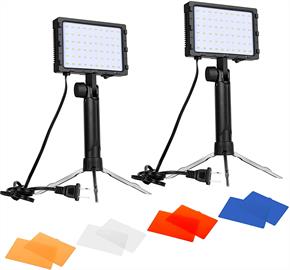 |
Good lighting during streams or meetings is just as important as content and video/audio quality. Even the best of cameras will fall flat if the subject and background are not lit up appropriately. If you are showing a backdrop behind your face, I believe in letting your character shine through with interesting objects and a few colors to light up the background. For me, the challenge is lightning up the green screen consistently, since that's what the software chroma keys work with on incoming feed. Sitting next to a window means natural lightning on either side of my green screen is way different, thus calling for controlled lighting while shutting out the outside world. While the Elgato/other lighting solutions are great, they are also expensive and have features I would not really need. My solution is the Emart 60 LED Portable Lighting Kit, a pair of table-top photography lights with retractable legs that sit on either side of my Ultrawide. Their only job is to provide a consistent green screen color on either side of me, while the two camera rings own the task of lighting up my struggling face. |
 |
There are three golden rules to streaming content—network, network and network. Even at decent resolution/FPS, you are pushing up a lot of content continuously and your network upload speed needs to able to handle the load. I upgraded my internet connectivity recently and now have faux gigabit internet that is carried over copper wires rather than fiber optic cables. Now, the majority of network modems support one or two Ethernet out lines and most households have a lot of devices. So an important aspect of network connectivity is your WiFi router—even if you are not on WiFi for streaming. You are likely plugging the network modem directly into the WiFi router, and then out to any devices. If your WiFi router cannot handle the bandwidth, you will drop a lot of the network benefit, even if you are hard-wired. After a few years, it was time to upgrade my WiFi router and I chose to go with the NetGear NightHawk AX1800 Dual Band WiFi 6 Router. With a quad-core processor and 5 gigabit Ethernet ports, this router supports up to 1.8 Gbps. It handles our home WiFi needs for lots of devices fairly well—meeting the demands of a software developer, a college professor and a 4.5 year old toddler all stuck at home. |
 |
I lived in denial for a few months, thinking strong WiFi should be good enough for most streaming needs. It is not. Even the 5GHz frequency is open to interference, prioritization struggles and general difficulty of wireless networks to maintain high upload speeds over long intervals. Please take it from someone who has learnt the hard way—you must get hard wired. Now, our cable comes into the household in the living room, which is central and houses TV/entertainment devices. And my office is in a corner across the foyer. The brute force solution is a long Ethernet cable, like 50 feet Insignia CAT-6 cable. I drag an Ethernet line from the WiFi router straight to my office, providing minimal network degradation. Yes the wire turns a few corners and goes under doors, held in place with duck tape. Fine, you can judge. |
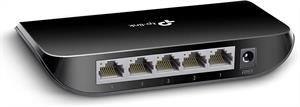 |
Once I got Ethernet cable to my desk, the next problem was how to share it between the dev/streaming computers. The solution is a simple Ethernet switch to split the Ethernet between two computers. I use the TP-Link 5 Port Gigabit Ethernet Switch—a sleek Ethernet splitter with easy plug & play and traffic optimization. It is fun when technology just works. |
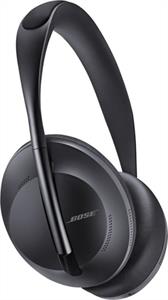 |
While talking is a big part of my job, I prefer not to talk to anyone while on the road or when deeply engrossed in something. Developer zen is precious and a headphone is a part of the look. I have had several headphones over the years, with widely varying feature sets and depth of sound. However, I do feel that when it comes to noise cancellation, it is hard to beat a Bose. Last Christmas, I got the Bose 700 Smart Wireless Headphones, after rocking the QC-35's for some time. The technology is quite amazing. I may have mentioned we have a bored pre-school kid at home. The Bose noise cancellation comes in handy for my favored music genre—the sound of silence. |
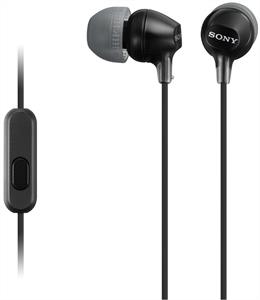 |
During long streams or meetings, I often prefer the reliability of a wired headset. I use a pair of wired Sony Headphones—simple, lightweight and never fails. |
 |
With all the big electronics at my desk, the days sometime get exhausting and changing things up helps keep me going. I have had the 10" MacBook 'Adorable' for about 5 years and have been saving up for a refresh. With good value from the trade-in program, I finally pulled the trigger on my casual machine upgrade - a space gray 2020 MacBook Air. The specs include a 13.3" display with 2560x1600 native resolution, 10th generation Intel Core i3, Intel Iris Plus GPU, 8 GB RAM and 256 GB SSD. For a change, Apple really listened to all the feedback and looks to have hit a homerun with this version of Air. The new keyboard has the perfect balance of forgiveness/travel and is a delight to type on. The screen is gorgeously crisp and battery life is solid. With computers like MacBook Airs, you really have to know your workflow and why you are investing to have one. This is my lightweight continuous productivity machine, and goes everywhere from couch, bed or flights. The MacBook Air is what I use for late night creative writing or for consumption mode after midnight. T-Rex typing for the win. |
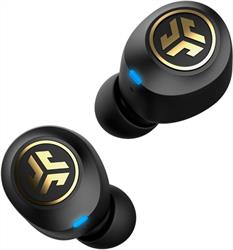 |
I do use a pair of wireless earbuds for sheer convenience—the JLabs Air Icon. Each earbud connects independently over bluetooth and holds charge for 6 hours, with an additional 18+ hours in the charging case. These earbuds remain paired to my MacBook Air and are very convenient if wearing VR headsets for freedom of movement. |
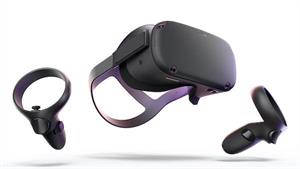 |
As we know, a lot of investments and innovations are happening in the AR/VR space in search for the next socially acceptable thing we can strap on to our faces. Towards that spirit, a recent acquisition has been the Oculus Quest - an all in one VR headset. The experiences this Oculus can light up are immersive and mesmerizing, with great implications for gaming and digital interactions. I am also learning Unity, the leading game engine and 3D development platform. Unity is a busy IDE for productivity, but scripting is fairly easy with C#. Coming from a traditional development background, I'm finding the new 3D canvas captivating. With the physics engine, locomotion, mesh rendering and particles—like they say, sky is the limit. |
 |
Personal voice assistants have come a long way—they have a wealth of intelligence/knowledge and are keys to smart home automation. I have an old Amazon Tap sitting under desk. It starts my morning, provides weather updates and entertains with ambient instrumental music. I have dabbled into writing voice-based Skills for Alexa-powered devices—just a lot of fun and likely a big part of future human-computer interactions. |
 |
My office is in a small corner room and our central air conditioning barely reaches me. So unfortunately, my office gets very hot in summer and very cold in winter. To counter that, I have two tower units that sit on the floor—one heater and one fan, both made by Lasko. They are definitely not air conditioning, but help a little with moving air around. They do both make monotonous noise—you can hear them if on casual meetings with me, but easy to filter out the noise for streams. |
So that's it—a listing of most of the furniture and electronics I have in my office. This is a humble effort to up the production quality of content creation and to maintain productivity while working from home. Many of us encounter similar roadblocks to overcome and I had to do lots of figuring out to know what solutions work for me. Hope this list helps. Like I said, each of us has unique working conditions and varying demands on content production. I would love to learn about what hardware options you use to help be productive.
So, what's in your office?

Sam Basu
Sam Basu is a technologist, author, speaker, Microsoft MVP and gadget lover. With a long developer background, he also worked as a Developer Advocacy Manager for advocating modern web/mobile/cloud development platforms on Microsoft/Telerik/Kendo UI technology stacks. His spare times call for travel, fast cars, cricket and culinary adventures with the family.
